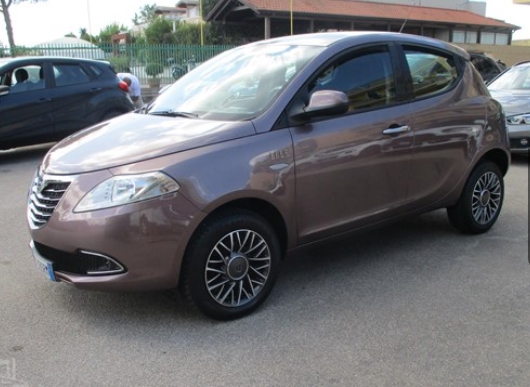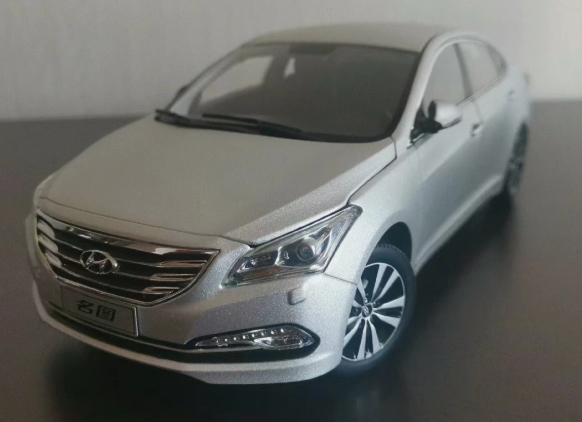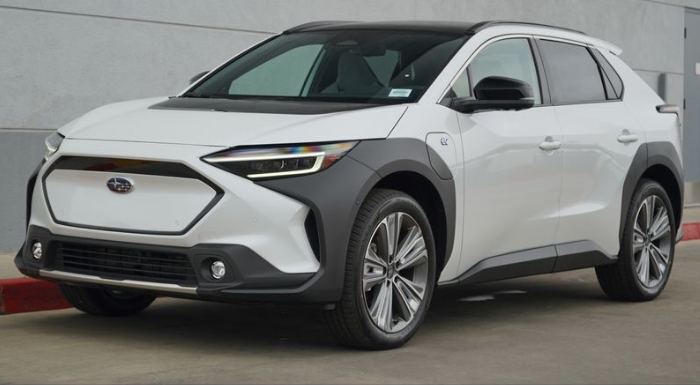The Enduring Allure of a Pocket Flagship: The Evolution of the Lancia Ypsilon
In the vast and often homogenous world of automotive design, few nameplates have so consistently championed style, elegance, and unapologetic individuality as the Lancia Ypsilon. For nearly four decades, this compact Italian car has been more than mere transportation; it has been a fashion statement, a “salotto mobile” (a mobile living room), and a testament to the idea that small cars can possess the soul and substance of a grand tourer. Tracing its evolution is to trace a unique thread in automotive history, from a luxurious upstart to a national icon, and now, into an electric renaissance.
The Genesis: The Autobianchi/Lancia Y10 (1985-1995)
To understand the Ypsilon, one must first look to its direct predecessor, the groundbreaking Y10. Launched in 1985, initially under the Autobianchi brand (and later co-branded or solely as a Lancia in most export markets), the Y10 was a car built on a radical premise. While its contemporaries in the city car segment focused purely on economy and utility, the Y10, built on the humble Fiat Panda platform, aimed to deliver the comfort, materials, and prestige of a larger Lancia flagship in a condensed package.
Its design was distinctive and controversial, a sharp, wedge-shaped silhouette penned by the Italdesign studio. Its most defining feature was the satin black tailgate, a visual signature that made it instantly recognizable. Inside, the Y10 broke new ground. Plush Alcantara upholstery, a material typically reserved for high-end performance cars, became a signature touchpoint. It offered features like power windows, central locking, and even a digital instrument cluster on certain models, all rarities in its class.
The Y10 was offered in a variety of trim levels and engine configurations throughout its ten-year lifespan:
Fire: The base model, featuring Fiat’s new, efficient 999cc Fully Integrated Robotised Engine (F.I.R.E.).
Touring: A more comfortable and well-appointed version, often with the 1050cc engine derived from a Brazilian Fiat unit.
Turbo: A genuinely spirited model featuring a turbocharged version of the 1050cc engine, offering impressive performance for its size.
GT i.e.: Later in its life, this fuel-injected 1301cc model replaced the Turbo, offering a more refined but still potent driving experience.
Special Editions: Numerous special editions like the Martini, Mia, and Avenue kept the lineup fresh and fashionable.
The Y10 established the core DNA that its successor would inherit: a focus on premium materials, avant-garde design, and the creation of a “pocket flagship.”
The First Generation: Lancia Y (Tipo 840, 1996-2003)
In 1996, the true successor arrived: the Lancia Y. Dropping the “10,” the car was based on the first-generation Fiat Punto platform, offering improved space and refinement. The design, by Enrico Fumia at Lancia’s Centro Stile, was a complete departure from the Y10’s sharp angles. It was a symphony of curves, with a distinctive arched roofline and soft, organic shapes that made it look like nothing else on the road.
The interior was even more revolutionary. Fumia moved the entire instrument cluster to the center of the dashboard, a decision made to improve driver ergonomics by keeping the gauges in their peripheral vision. This would become a defining characteristic of the Ypsilon for two generations. The cabin was a showcase of color and texture.
Lancia introduced the “Kaleidos” program, allowing customers to choose from over 100 different paint colors, which could be matched with a wide array of interior Alcantara shades.
The trim hierarchy was simple, yet allowed for significant personalization:
LE: The entry-level model.
LS: A more comfortable, better-equipped version.
LX: The top-of-the-line model, featuring the most luxurious appointments and standard features like air conditioning and alloy wheels.
Later in its lifecycle, two iconic trims were introduced that would become recurring themes:
Elefantino Blu (Blue Elephant): A youthful, accessible entry-level version, aimed at new drivers.
Elefantino Rosso (Red Elephant): A sportier-themed model with a more powerful engine, firmer suspension, and distinct styling cues, reviving the symbol of Lancia’s historic racing squad.
Engine choices were primarily from the reliable F.I.R.E. family, including 1.1L and 1.2L 8-valve units, but the standout was the lively 1.2L 16-valve engine with 86 horsepower, which perfectly suited the Y’s chic character. A 1.4L 12-valve “Pratola Serra” engine was also briefly offered. The Lancia Y was a commercial success, cementing the model’s reputation as the small car of choice for the style-conscious.
The Second Generation: Lancia Ypsilon (Tipo 843, 2003-2011)
For its second generation, the car officially adopted the full “Ypsilon” name. Launched in 2003 and based on an evolution of the second-generation Fiat Punto platform, it refined the successful formula. The design was an elegant evolution of its predecessor’s curves, adding a touch of retro-modern sophistication with chrome detailing and a more prominent, classic Lancia shield grille. It remained a three-door-only model, emphasizing a personal, “couture” feel.
The central instrument panel remained, but the interior quality took another leap forward. It became even more of a “salotto,” with options for leather, Alcantara, and high-quality fabrics. This generation cemented the Ypsilon’s fashion-forward credentials through two key innovations:
B-colore: A sophisticated two-tone paint scheme that became hugely popular, allowing owners to express their individuality.
Gran Luce Sky-Dome: A large glass sunroof that made the cabin feel incredibly airy and luxurious.
The trim levels were rebranded with more evocative, premium-sounding names that would stick with the car for years:
Argento (Silver): The stylish entry point.
Oro (Gold): The well-equipped, balanced mid-range choice.
Platino (Platinum): The flagship, featuring the highest level of luxury and technology, including a Bose sound system and automatic climate control.
The engine lineup was modernized, introducing the highly efficient and torquey 1.3L MultiJet diesel engine, which became a favorite for its blend of performance and incredible fuel economy. Petrol options included updated 1.2L and 1.4L F.I.R.E. engines. This generation also saw a series of high-profile collaborations with fashion brands, including the sporty MomoDesign edition and the ultra-exclusive Versus Versace special edition, further blurring the line between car and accessory.
The Third Generation: Lancia Ypsilon (Tipo 846, 2011-2024)
The third-generation Ypsilon, launched in 2011, marked the most significant shift in the model’s history. To broaden its appeal, it moved to a five-door-only body style for the first time. Lancia’s designers cleverly disguised the rear doors by hiding the handles in the C-pillar, preserving a coupe-like profile. Built on the Fiat “Mini” platform shared with the Fiat 500 and Panda, it was slightly more compact than its predecessor but offered greater practicality.
The design language evolved, blending the soft curves of the previous Ypsilon with sharper, more dynamic lines inspired by the contemporary Lancia Delta. The interior controversially retained the central instrument cluster but was updated with new technology.
This generation had an extraordinarily long life, sustained by a series of updates and a plethora of special editions. After Lancia’s parent company decided to withdraw the brand from all markets outside of Italy in 2017, the Ypsilon became the sole model in Lancia’s lineup. Instead of fading away, it became a phenomenon, consistently ranking as one of Italy’s best-selling cars for over a decade.
The engine lineup was diverse and forward-thinking:
0.9L TwinAir: The most notable engine was Fiat’s innovative two-cylinder turbocharged engine, known for its distinctive sound and excellent efficiency.
1.2L F.I.R.E. Evo II: The venerable and reliable four-cylinder soldiered on as the entry-level choice.
1.3L MultiJet II: The popular diesel was updated for continued service.
EcoChic Versions: Factory-fitted LPG versions were offered from the start, catering to the cost-conscious Italian market.
Mild Hybrid (2020): A major update saw the introduction of a mild-hybrid powertrain based on a new 1.0L 3-cylinder F.I.R.E.Fly engine, bringing the Ypsilon into the electrified era and ensuring its continued market dominance.
The core trim levels remained Silver, Gold, and Platinum, but they were supplemented by an almost continuous stream of special editions, including the Elefantino ’14, Mya, Unyca, Monogram, and a high-fashion collaboration with Alberta Ferretti. These editions kept the aging model relevant and desirable.
.

.
The Renaissance: The New Lancia Ypsilon (2024-Present)
After a decade as a one-car, one-country brand, Lancia was reborn under the new Stellantis automotive group. Spearheading this renaissance is the all-new, fourth-generation Ypsilon, launched in 2024. This model is a radical and decisive break from the past, designed to relaunch Lancia across Europe as a premium electric brand.
Built on the Stellantis e-CMP common modular platform, it is the first Ypsilon to be offered as a fully electric vehicle, alongside a 1.2-litre mild-hybrid petrol engine. The design is a bold statement, inspired by Lancia’s new “Pu+Ra Design” (Pure and Radical) language. It features a reinterpreted “calice” (goblet) grille rendered in light, and striking round LED tail lights that explicitly evoke the legendary Lancia Stratos.
The interior is a complete revolution. The central instrument cluster is gone, replaced by a dual-screen “S.A.L.A.” (Sound Air Light Augmentation) infotainment system, which provides a customisable, high-tech hub. The cabin is designed to feel like an elegant Italian living room, featuring textures and materials inspired by furniture design. This is most evident in the launch edition, the Edizione Limitata Cassina, a collaboration with the iconic Italian high-end furniture maker, which features a unique multi-purpose “tavolino” (small table) on the center console.
The announced trim levels signal a new strategic direction:
Ypsilon: The standard, well-appointed base model.
LX: A historic Lancia designation revived for the luxurious top-tier version.
HF: An all-electric, all-wheel-drive high-performance version has been announced, promising to reintroduce the spirit of Lancia’s rally-dominating past.
From the pioneering luxury of the Y10 to the avant-garde curves of the Y, the fashion-forward elegance of the second and third generations, and now the bold electric statement of the fourth, the Lancia Ypsilon has never been just a car. It has been a mirror reflecting Italian design, culture, and innovation for its time. It has outlasted rivals, survived corporate upheavals, and cultivated a fiercely loyal following by steadfastly refusing to be ordinary. As it embarks on its newest chapter, the Ypsilon remains what it has always been: a small car with a very large soul.







